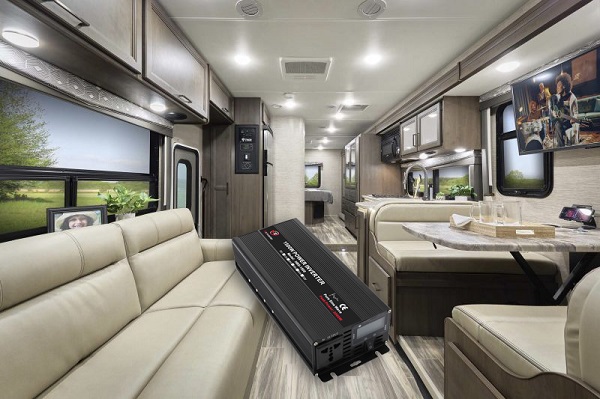A power inverter is an electronic device that converts direct current (DC) power from batteries or other sources into alternating current (AC) power that can be used to power household appliances, tools, and equipment. It is also known as a DC to AC inverter or simply an inverter.
Power inverters are commonly used in recreational vehicles (RVs), boats, and camping trailers, where AC power is needed to run lights, TVs, refrigerators, and other appliances. They are also used in off-grid homes and businesses that are not connected to the main power grid.

There are different types of power inverters available on the market, including modified sine wave inverters, pure sine wave inverters, and square wave inverters. Each type has its own advantages and disadvantages, depending on the application and the type of appliances that will be powered.
Modified sine wave inverters are the most common type of power inverter and are typically less expensive than pure sine wave or square wave inverters. They are suitable for running basic appliances like lights, fans, and televisions, but may not be able to handle more sensitive electronics like computers or medical equipment.
Pure sine wave inverters produce a smoother and more consistent AC output than modified sine wave inverters, making them ideal for running sensitive electronics. However, they are typically more expensive than modified sine wave inverters.
Square wave inverters are the cheapest type of power inverter, but they produce a less consistent AC output than modified or pure sine wave inverters. They are best suited for running basic appliances like lights and fans.
When choosing a power inverter, it is important to consider the wattage rating, which indicates the maximum amount of power the inverter can handle. It is also important to choose an inverter with the correct voltage and frequency ratings for your specific application.
In conclusion, a power inverter is a useful device that allows you to convert DC power into AC power for use with household appliances, tools, and equipment. With the right type of inverter and proper consideration of wattage, voltage, and frequency ratings, you can ensure that your appliances run smoothly and efficiently.
